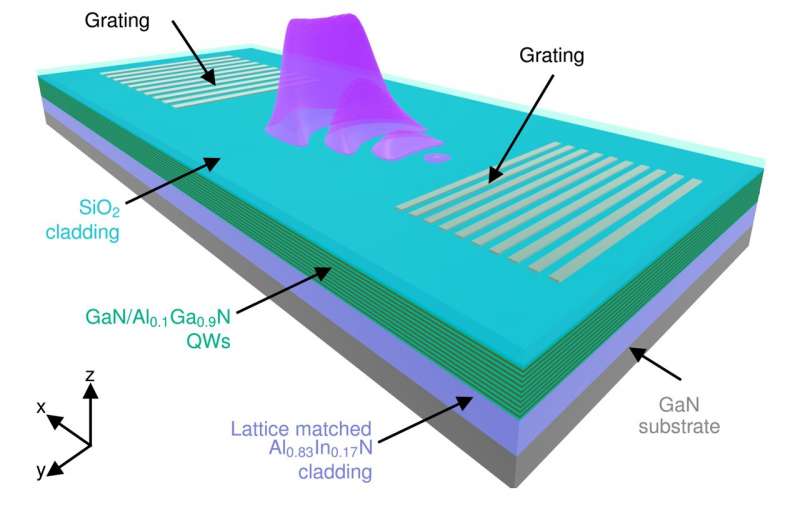
Despite the tremendous progress made in this field, there is currently no platform providing such features for the ultraviolet (UV) spectral range, which is where broadband spectra generated by nonlinear modulation can be used for new on-chip ultrafast chemical and biochemical spectroscopy devices.
Now, an international team of scientists including EPFL have achieved giant nonlinearity of UV hybrid light-matter states ("exciton-polaritons") up to room temperature in a waveguide made of AlInGaN, a wide bandgap semiconductor material behind the solid-state lighting technology (e.g. white LEDs) and blue laser diodes.
Published in Nature Communications, the study is a collaboration between the University of Sheffield, ITMO Saint Petersburg, Chalmers University of Technology, the University of Iceland, and the LASPE at EPFL's Institute of Physics of the School of Basic Sciences.
The scientists used a compact 100 um-long device, to measure an ultrafast nonlinear spectral broadening of UV pulses with a nonlinearity 1000 times larger than that observed in common UV nonlinear materials, which is comparable to non-UV polariton devices.
Using AlInGaN is a significant step toward a new generation of integrated UV nonlinear light sources for advanced spectroscopy and measurement. "The AlInGaN system is a highly robust and mature semiconductor platform that shows strong excitonic optical transitions up to room temperature in the UV spectral range," says EPFL's Raphaël Butté, who worked on the study.

 Previous page
Previous page Back to top
Back to top







